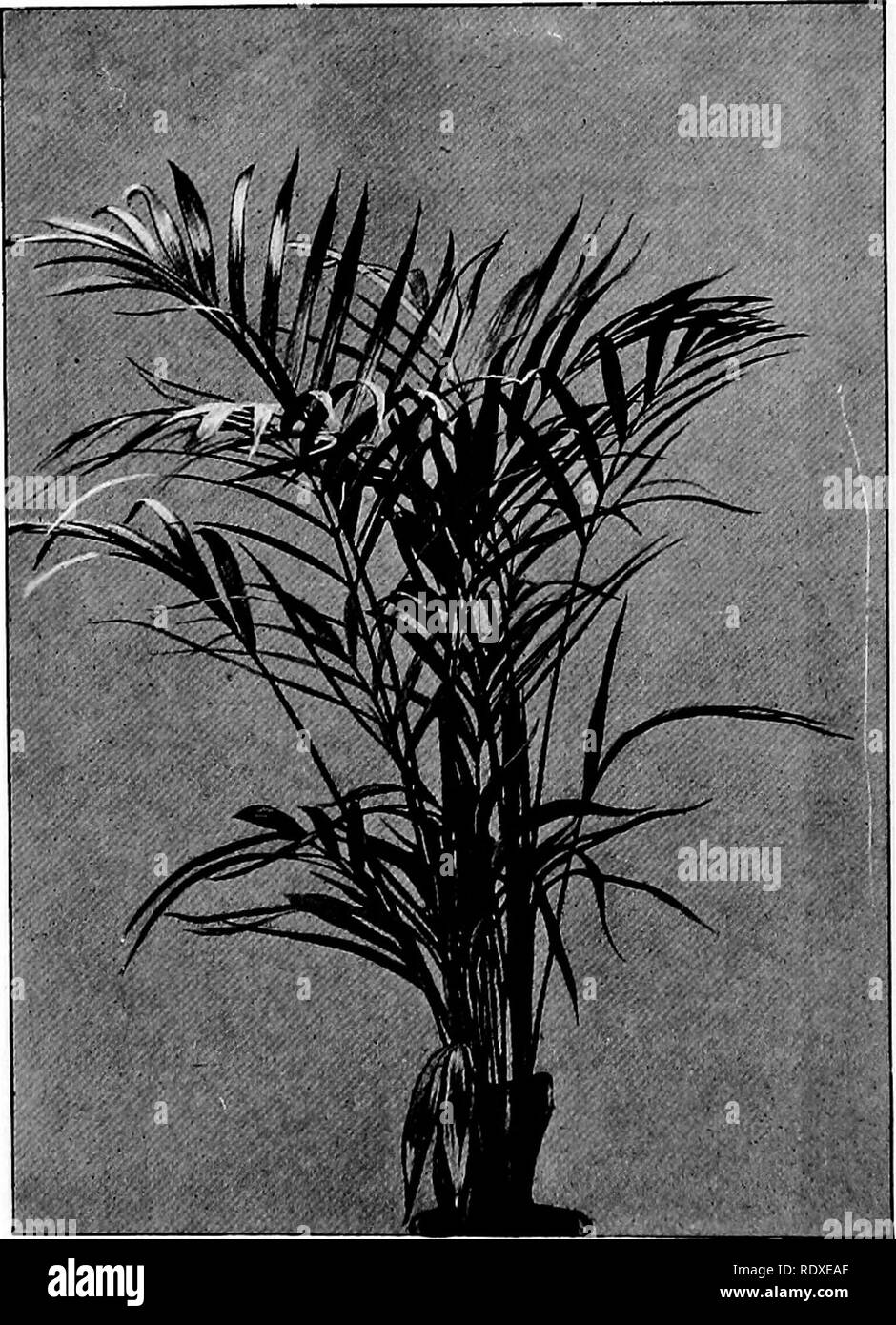. The Book of gardening; a handbook of horticulture. Gardening; Horticulture. 824 THE BOOK OF GARDENING. the old petioles. The leaves are glaucous on both sides, and are divided into narrow segments; the petioles, which vary from 3ft. to 4ft. in length, are provided at the edges with strong spines. When tall specimens are required all suckers have to be removed : if not the plants would assume rather a bushy aspect. This species can be easily propagated by suckers provided with roots. C. h. elegans (Fig. 552) is a very beautiful variety for indoor decoration. C. h. macrocarpa is a very strong-

Image details
Contributor:
The Book Worm / Alamy Stock PhotoImage ID:
RDXEAFFile size:
7.1 MB (518.6 KB Compressed download)Releases:
Model - no | Property - noDo I need a release?Dimensions:
1344 x 1858 px | 22.8 x 31.5 cm | 9 x 12.4 inches | 150dpiMore information:
This image is a public domain image, which means either that copyright has expired in the image or the copyright holder has waived their copyright. Alamy charges you a fee for access to the high resolution copy of the image.
This image could have imperfections as it’s either historical or reportage.
. The Book of gardening; a handbook of horticulture. Gardening; Horticulture. 824 THE BOOK OF GARDENING. the old petioles. The leaves are glaucous on both sides, and are divided into narrow segments; the petioles, which vary from 3ft. to 4ft. in length, are provided at the edges with strong spines. When tall specimens are required all suckers have to be removed : if not the plants would assume rather a bushy aspect. This species can be easily propagated by suckers provided with roots. C. h. elegans (Fig. 552) is a very beautiful variety for indoor decoration. C. h. macrocarpa is a very strong-growing variety. The stem is rather stout, and the leaves vary in colour from grey to green, shaded with blue. In its early state it forms a very handsome plant for various decora- tive purposes. Several other varieties of C. humilis are known in cul- tivation, but they are all more or less closely allied. Chrysalido- carpus. — A monotypic genus allied to Areca, under which the following plant is classified by nearly every grower. For culture see " Areca." C. lutescens (Fig. 553) {Areca lutescens, Hyophorbe Comtnersoniana, and H. indica) is a very elegant and decorative ' species, but rare in cultivation. It has a cylindrical caudex, smooth and swollen at the base, 4m. to 6in. in diameter, and over 30ft. in height. The beautiful leaves are pinnate and arching, with numerous lanceolate pinnee of a rich green on both sides.. Fig. 553.—Chrysalidocarpus lutescens.. Please note that these images are extracted from scanned page images that may have been digitally enhanced for readability - coloration and appearance of these illustrations may not perfectly resemble the original work.. Drury, William D. , 1857-1928; Abbott, J. M. London, L. U. Gill; New York, C. Scribner's Sons